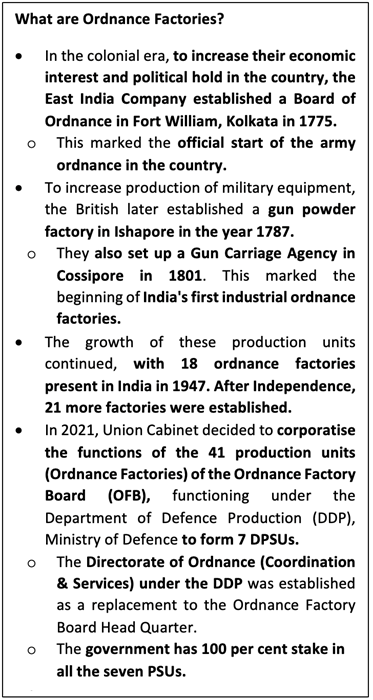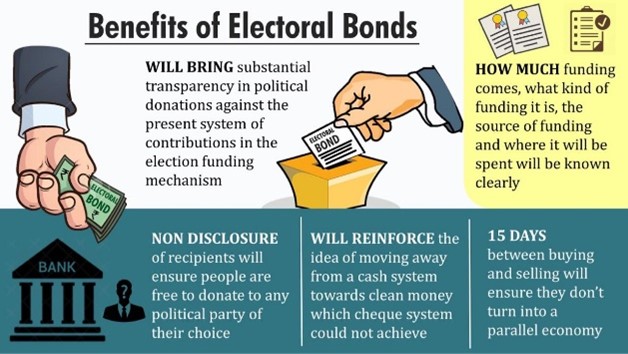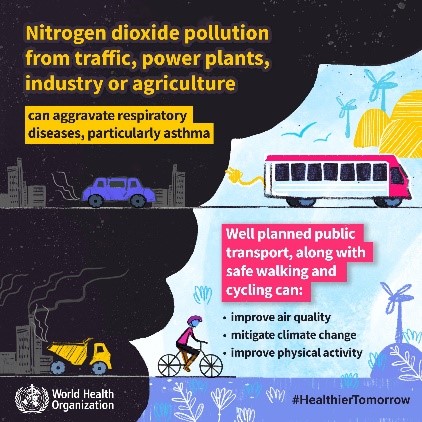Tuesday, 12th April 2022
Fourth India-US 2+2 dialogue
In News
India and the United States discussed a wide array of issues at the 4th 2+2 ministerial dialogue that was held in Washington.
Importance of the dialogue
- The recent dialogue comes in the backdrop of the war in Ukraine, now in its seventh week and the pandemic that started two years ago.
- Both sides unequivocally condemned civilian deaths in Ukraine and sought immediate cessation of hostilities.
- Defence cooperation and several other aspects that are at the heart of the bilateral ties emerged as the focus at the talks.
- Other issues discussed were the COVID-19 response, supply chains, climate action to global and regional issues.


Key takeaways
- India has invited the US investors to come to India with a focus on co-development and co-production. A focus should be on ‘Make in India.’
- The challenges in the Indo-Pacific were a particular focus, and Quad has been mentioned as a powerful force of global good.
- India appreciated the attention and energy devoted by the United States to the Quad. Its elevation and intensification in the last year benefits the entire Indo-Pacific.
- Both sides welcomed discussions in Quad working groups on vaccines and climate change.
- US has said that no decision has been taken regarding potential sanctions or potential waivers under the CAATSA law but US has urged all countries to avoid major new transactions for Russian weapons systems, particularly in light of what Russia is doing to Ukraine.
- India and Russia have shared defence ties over the years, and it has been procuring S-400 air defence systems.
- India has assured that its Russian energy purchases are much smaller than what Europe trades with Russia.
- US has reaffirmed its commitment to support India's permanent membership in a reformed UN Security Council and New Delhi's entry to the Nuclear Suppliers' Group.
- India and the US are working together to try to bring more food to world markets as well as to the World Food Program.
- US has expressed concern over rising human rights abuses in India by some government, police and prison officials.
- US observed that both the countries have shared a commitment to democratic values, including the protection of human rights.
- India and the US also signed the Memorandum of Understanding on Space Situational Awareness — to further cooperation in outer-space.
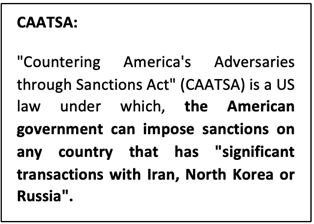
Regional issues discussed:
- The two sides discussed what the ramifications of the situation in Afghanistan, where the Taliban has taken over after a chaotic U.S. departure in August last year.
- Sri Lanka, which is in the midst of the worst economic crisis in decades, and Pakistan, which, after intense political drama, has a new Prime Minister were discussed.
- On China, the US has said that it’ll stand alongside India as China was constructing “dual-use infrastructure” along the border with India.
- Dual use goods are products and technologies normally used for civilian purposes but which may have military applications.
Sources:
- Explained: What is the ‘2+2’ format of dialogue between India and the US?:
- Ukraine war, defence ties, Indo-pacific: Focus at India-US 2+2 talks| 10 points:
- India US 2+2 Meet:
- India, U.S hold broad 2+2 discussions, with Ukraine looming over talks:
- India-US 2+2 dialogue live updates: India's ties with Russia developed when US was unable to be its partner, says Blinken:
Food price index
In News
Food prices have recorded new highs due to Ukraine war disruptions
About the News
- The UN Food and Agriculture Organization’s (FAO) recently released food price index averaged at an all-time high of 159.3 points.
- These indices are up from the previous high of 141.4 points, which had itself broken an earlier record of 137.6 points scaled 11 years ago in February 2011.
- This rise and huge volatility in the last two years has been attributed to Covid-19 pandemic and now the Russia-Ukraine war.
- The war has led to port closures in the Black Sea and Azov Sea, plus Russian banks being cut off from the international payments system, have resulted in massive shipping disruptions from this key agri-commodities supply region.
- Although, India's comfortable public rice and wheat stocks provides some cushion against international price surge. But rising cost of farm inputs (diesel, fertilisers and pesticides) presents equal challenges.
What are the major highlights of the report?
- About: The FAO index is a weighted average of world prices of a basket of food commodities over a base period value (taken at 100 for 2014-16).
- Demand destruction: The index had crashed to a four-year low of 91.1 points in May 2020, due to demand destruction triggered by pandemic-induced lockdowns across countries.
- Supply disruptions: As demand returned with governments lifting economic activity and movement restrictions, supply chain disruptions — from shortages of everything, from harvesting labourers to packaging materials and shipping containers — came to the fore.
- Geopolitical tension: The supply shortages have worsened with the Black Sea region tensions, leading to the index moving up almost 24 points or 17.5% in just last three months.
- Surge in commodity prices:
- Cereal and vegetable oil: The FAO’s cereal and vegetable oil price indices hit record highs of 170.1 points and 248.6 points, respectively given Russia and Ukraine’s combined share of 28.3%, 19.5%, 30.8% and 78.3% in global exports of wheat, corn (maize), barley and sunflower oil, respectively.
- Meat and dairy: Price indices for these have averaged 120 points (an all-time high) and 145.2 points (highest since April 2014), respectively. These have possibly been driven by the increased cost of cattle feed ingredients (maize, soyabean, groundnut, mustard and cottonseed oilcake) and prices of animal fat (butter, ghee, beef tallow and pork lard) tracking vegetable fats (especially palm oil). Besides, lower milk production has been reported from major suppliers, including New Zealand, Western Europe and the US.
- Case of India:
- Cushion of buffer stock: India has comfortable level of public wheat and rice stocks that is way above the required minimum buffer norms. It has provided some insulation against soaring international food prices.
- Growth in agri-export: High global prices have enabled the country’s agricultural exports to grow by 19.9% and reach a historic high of $50.21 billion in 2021-22.
- Oil burden: Farmers are paying much more for diesel, fertilisers and crop protection chemicals – whose prices have also gone up alongside Brent crude and other international commodity prices. The real challenge however will come in the ensuing kharif planting season from June.

Sources:
State Energy and Climate Index
In News
Gujarat has topped Niti Aayog's State Energy and Climate Index-Round 1 (SECI) among larger states.
About the News
- This index that ranks states and Union territories (UTs) has ranked Gujarat as no. 1 followed by Kerala and Punjab.
- The index is used by the states and UTs to benchmark their performance against their peers, analyse the potential challenges to develop better policy mechanisms, and efficiently manage their energy resources.
State Energy and Climate Index
- What is the Index? It is an index released by NITI Aayog that ranks states and UTs on six parameters namely (a) discoms' performance; (b) access affordability and reliability of energy; (c) clean energy initiatives; (d) energy efficiency; (e) environmental sustainability; and (f) new initiatives.
- These parameters include a total of 27 indicators.
- Base year: The index is based on 2019-20 data.
- Categorization & Ranking of States:
- Based on the outcome of SECI Round-1 scores, states and union territories have been categorised into three groups- front runners, achievers, and aspirants.
- The states have been categorized based on size and geographical differences as larger states, smaller states, and UTs.
- Gujarat, Kerala, and Punjab have been ranked as the top three performers in the category of larger states.
- Goa, emerged as the top-performing state in the smaller states category, followed by Tripura, and
- Among UTs, Chandigarh, Delhi, and Daman & Diu/Dadra & Nagar Haveli are the top performers.
- Chhattisgarh, Madhya Pradesh and Jharkhand were placed at the bottom.
- Best Performers in respective domains:
- Punjab was the best performer in discom performance parameter among larger states.
- Kerala emerged as the top performer in access, affordability and reliability category among larger states.
- Haryana was the best performer when it comes to clean energy initiatives among larger states.
- Tamil Nadu emerged as the top performer in the energy efficiency
- Significance: Apart from enabling the states to develop better policy mechanisms, the index complements the country's efforts towards achieving the 'Panchamrit' targets.
- 'Panchamrit' targets/five nectar elements are India’s five-point agenda announced during COP26 in Glasgow to combat climate change. These include:
- To raise the non-fossil fuel based energy capacity of the country to 500 GW by 2030.
- 50% of the country’s energy requirements to be met using renewable energy sources by 2030.
- Reduce the total projected carbon emission by one billion tonnes between now and the year 2030.
- Reduce the carbon intensity of the economy to less than 45% by 2030.
- To become carbon neutral and achieve net zero emissions by the year 2070.
- It will enable the state governments to prioritise policies to facilitate inclusive growth by providing affordable, accessible, reliable, and sustainable energy to the citizens.
- 'Panchamrit' targets/five nectar elements are India’s five-point agenda announced during COP26 in Glasgow to combat climate change. These include:
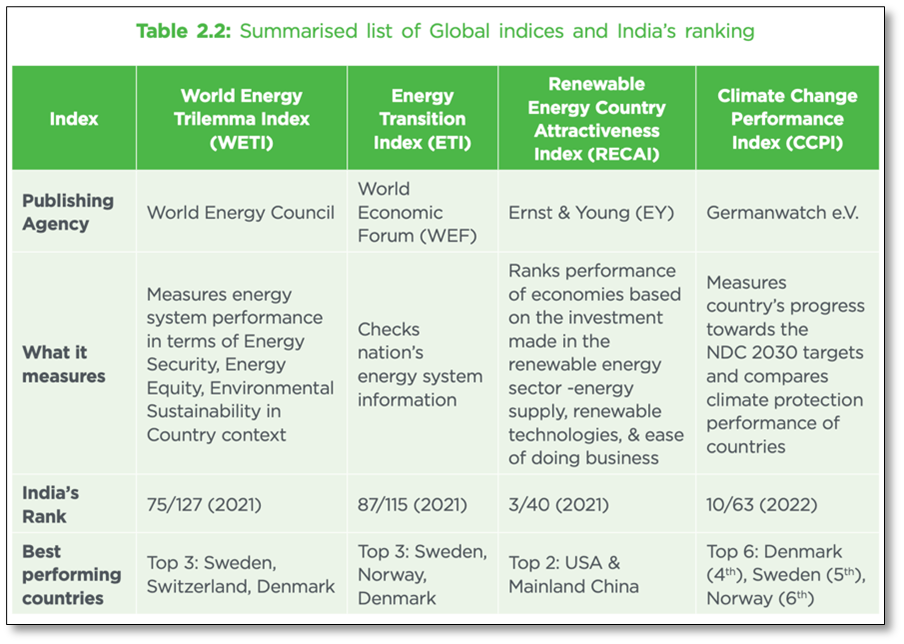
Source:
- Gujarat tops NITI Aayog's State Energy and Climate Index-Round 1
- Gujarat tops Niti's State Energy and Climate Index-Round 1 among larger states
- NITI Aayog Launches State Energy & Climate Index-Round 1, Gujarat Tops Among Larger States
- STATE ENERGY & CLIMATE INDEX ROUND-I:
Image source:
International Day of Human Space Flight
On April 12, 1961, Russian cosmonaut Yuri Gagarin orbited Earth aboard the Vostok 1 spacecraft. This momentous occasion paved the path for space exploration for the benefit of humanity as a whole. Cosmonautics Day is observed by the Soviet space programme to commemorate the first manned spaceflight. The United Nations General Assembly established April 12 to be the International Day of Human Space Flight in a resolution passed on April 7, 2011. The first human-made satellite was launched into orbit by the Soviet Union in 1957. Sputnik I was the name of the satellite. Another momentous occurrence occurred four years later. It took him 108 minutes to complete his voyage around the world. Gagarin's flight was a watershed moment in the Space Race.

Sources:
World Energy Transitions Outlook,2022
In News
The International Renewable Energy Agency (IRENA) has recently released the 2022 edition of the World Energy Transitions Outlook.
About the News
- The report outlines the priority actions that will be needed to be taken between now and 2030 to keep the goal of limiting the global temperature increase to 1.5C within reach.
- The energy transition is far from being on track and anything short of radical action in the coming years will diminish, even eliminate chances to meet our climate goals, forget the goal of keeping 1.5C alive in the long-term, as outlined by the Glasgow Climate Pact (COP-26)
- The report has stressed that keeping the world on a 1.5C pathway will require ensuring that renewables account for at least 40% of the global annual energy mix in 2030, up from 14% at present.
- Although the surge of net zero commitments shows that the world serious about the gravity and complexity of the situation however, the past couple of years have exposed the weaknesses and vulnerabilities of a system heavily reliant on the fuels of the 20th century.

WETO report
- About: The World Energy Transitions Outlook (WETO)outlines a pathway for the world to achieve the Paris Agreement goals and halt the pace of climate change by transforming the global energy landscape.
- Objective: The report presents options to limit global temperature rise to 1.5°C and bring CO2 emissions to net zero by 2050.
- Recommendations: It offers high-level insights on technology choices, investment needs, policy framework and the socio-economic impacts of achieving a sustainable, resilient and inclusive energy future.
Key Findings of the Report
Need for energy transition
- Compounding crises: Events of recent years have accentuated the cost to the global economy of a centralised energy system highly dependent on fossil fuels. Due to the impacts of human caused climate change, between 3 and 3.6 billion people are living in settings highly vulnerable to climate change as highlighted by the Intergovernmental Panel on Climate Change (IPCC)
- Need for prolonged interventions: Government policies must be guided by the overarching goals of arresting climate change and ensuring sustainable development.
- Need for radical steps: Given the inadequate pace and scope of the transition, anything short of radical and immediate action will diminish – possibly eliminate - the chance of staying on the 1.5°C or even 2°C path.
- Energy security and stability: Acceleration of the energy transition is also essential for long-term energy security, price stability and national resilience as some 80% of the global population lives in countries that are net energy importers. With the abundance of renewable potential yet to be harnessed, this percentage can be dramatically reduced.
- Diversifying the economy by integrating renewable energy and new technologies could help support innovation, and increased demand from environment-related expenditures would likely have a positive effect on the creation of green jobs. The increased output would ultimately have a positive impact on the region's GDP.
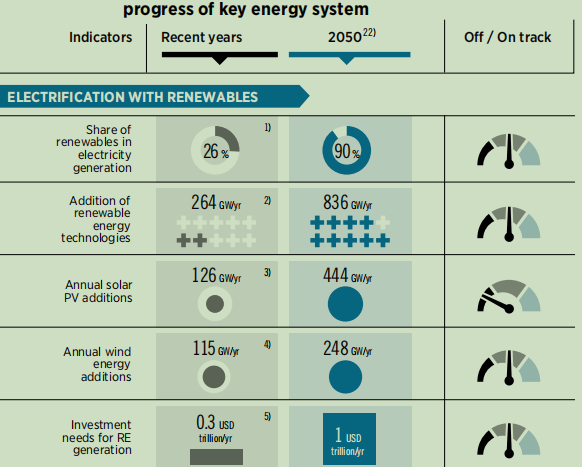
2030 priorities
- Priority areas: Progress will depend on political will, well-targeted investments, and a mix of technologies, accompanied by policy packages to put them in place and optimise their economic and social impact.
- Replacing coal power with clean alternatives: Concerted action and international co-operation are essential for timely replacement of coal in industry as almost 30% of all coal is used in iron and steel, cement, and other industries.
- Phasing out fossil fuels: It should be done in tandem with measures to eliminate market distortions and incentivise energy transition solutions.
- Infrastructure upgrades: Investments in infrastructure besides modernisation, and expansion are needed to increase system resilience and build flexibility for a diversified and interconnected system capable of accommodating high shares of variable renewable energy.
- Mainstreaming Green hydrogen: It should move from niche to mainstream with cumulative installed capacity growing to some 350 GW by 2030.
- Modern bioenergy: Contribution of energy from biomass needs to triple by 2030 with steps to replace traditional use of biomass (such as firewood) by clean cooking solutions.
- Shift towards electric vehicles: The majority of car sales by 2030 should be electric as electromobility is a bright light of the energy transition progress, with EVs already at 8.3% of global car sales in 2021.
- Energy efficient infrastructure: All new buildings must be energy efficient, and renovation rates should be significantly increased. There is need to bring building codes, energy performance standards for appliances, and mandates for renewables-based heating and cooling technologies.
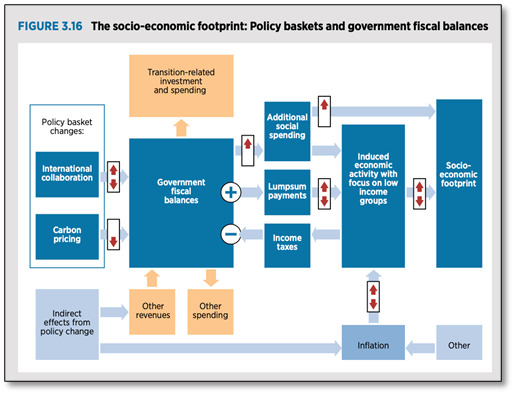

Towards the 2050 goal:
- Electrification and efficiency: IRENA’s 1.5°C pathway positions these as key drivers of the energy transition, enabled by renewables, hydrogen, and sustainable biomass. This pathway can cut of nearly 37 gigatonnes of annual CO2 emissions by 2050.
- Renewables-based electricity: It is now the cheapest power option in most regions. Renewables are now the default option for capacity additions in the power sector in almost all countries with solar and wind technologies having consolidated their economic outlook.
- Decarbonisation of end uses: It is the next frontier, with many solutions provided through electrification, green hydrogen and the direct use of renewables. In the transport sector, oil continues to dominate thus expanded electrification and improvements in energy efficiency of renewables can play a crucial role in alleviating concerns about prices and security of supply.
- Investments: The 1.5°C Scenario will require investments of USD 5.7 trillion per year until 2030. IRENA estimates that USD 0.7 trillion in annual investments in fossil fuels should be redirected towards energy transition technologies.
- Creation of jobs: By 2030, the 1.5°C-aligned energy transition promises the creation of close to 85 million additional energy transition-related jobs and support a boost in global gross domestic product
- Differentiated responsibility: The largest energy consumers and carbon emitters should be bound to implement the most ambitious plans and investments with funds and knowledge be made available to less wealthy nations to advance the quest for an inclusive and more equitable world.

Conclusion: Increasing ambition in the National Determined Contributions and national energy plans under the Glasgow Climate Pact must provide certainty and guide investment strategies in line with 1.5°C. Particularly the world’s largest energy consumers and carbon emitters from the G20 and G7 must show leadership and implement ambitious plans and investments domestically and abroad.
They will need to support the global supply of 65 per cent renewables in power generation by 2030. Climate finance, knowledge transfer and assistance will have to increase for an inclusive and equal world.
Question: Discuss the need for Energy transition and pathways to achieve these transitions to reach the climate targets.
Sources:
- https://www.irena.org/-/media/Files/IRENA/Agency/Publication/2022/Mar/IRENA_WETO_Summary_2022.pdf?la=en&hash=1DA99D3C3334C84668F5CAAE029BD9A076C10079 https://www.edie.net/world-leaders-must-radically-scale-up-renewable-energy-now-irena-warns/
- World Energy Transitions Outlook: 1.5°C Pathway:
- Energy transition holds key to tackle global energy and climate crisis: IRENA:
- Where Does India Stand in the Energy Transition?:
Jama Masjid during Ramzan
This is image of Old Delhi's Jama Masjid lit up for the celebrations of the holy month of Ramadan. Ramadan, also known as Ramzan, is one of the most important and holiest months for the Muslim community around the world. During the holy month, Muslims fast from dawn to night. The pre-dawn meal is called ‘sehri’ and the meal that is had after the fast is broken is called ‘iftar’. Muslims around the world follow a religious tradition of serving dates at their Ramadan iftar table, with many making it a point to actually to break their fast with them. It is said that Ramadan is the month when the first verses of the Quran were revealed to Prophet Muhammad around 1,400 years ago, on ‘Laylat al-Qadr’, one of the five odd-numbered nights that fall on the last ten days of Ramadan. Ramadan or Ramzan originates from the Arabic word, ‘ar-ramad’, which means scorching heat.

Source:
Indigenous Intelligent Transportation Systems (ITS)
- Context: An indigenous Onboard Driver Assistance and Warning System-ODAWS, Bus Signal Priority System and Common SMart iot Connectiv (CoSMiC) software have been launched under ITS initiative of Ministry of Electronics and Information Technology (MeitY).
- Intelligent Transport Systems are the control and information systems that use integrated communications and data processing technologies for the purposes of:
- improving the mobility of people and goods
- increasing safety, reducing traffic congestion and managing incidents effectively
- meeting transport policy goals such as demand management or public transport priority measures
- ODAWS incorporates vehicle-borne sensors for monitoring driver propensity and vehicle surroundings to deliver acoustic and visual alerts for driver assistance. The navigational sensor provides a precise geo-spatial orientation of the vehicle as well as trends in driving behaviour.
- Bus signal priority System is an operational strategy that modifies normal traffic signal operations to better accommodate in-service public buses at signal-controlled intersections. Unlike a blind priority that is given for emergency vehicles, here it is a conditional priority, which is given only when there is an overall reduction in delay for all vehicles.
- CoSMiC is a middleware software providing standard based deployment of IoT adhering to oneM2M based global standard.

Source:
- Indigenous Intelligent Transportation Systems (ITS) Solutions for Indian Traffic Scenario launched under InTranSE -II Program
- Indigenous Intelligent Transportation Systems (ITS) Solutions For Indian Traffic Scenario Launched Under InTranSE -II Program
Image source:
“Tour of Duty (ToD)” scheme
- Context: The Department of Military Affairsis of late moving towards finalising the “Tour of Duty (ToD)” scheme.
- The scheme also known as Agnipath entry scheme involves recruiting youngsters as soldiers, which will be called Agniveers, for a fixed period of three years.
- This is being done in the backdrop of the urgent need to curb the ballooning salary and pension billsthat are adversely impacting military modernization.
- This will be a voluntary engagement and it is for youths who“do not want to make defence services their permanent vocation, but still want to experience the thrill and adventure of military professionalism”.
- The soldiers would be given a payout along with priority in recruitment to certain government jobs, including the central armed police forces.
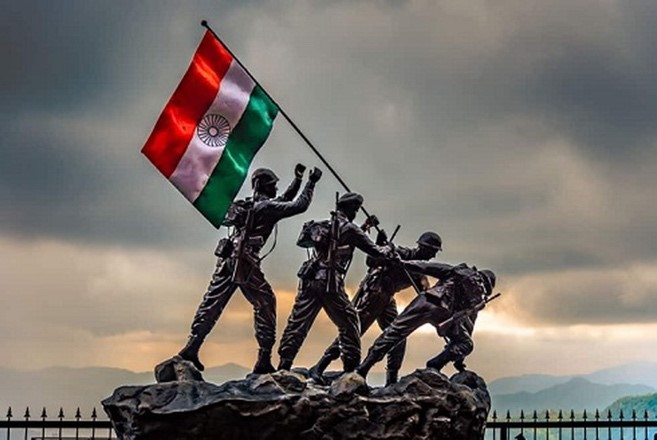
Source:
- Government giving final touches to “Tour of Duty (ToD)” scheme
- 3-yr ‘Tour of Duty’ for jawans — govt to roll out new recruitment process, not for officers
Image source:
Allotting and Vacating Bungalows to Ministers
- Context: The Directorate of Estates (DoE) under the Ministry of Housing and Urban affairs has been getting a number of former Union ministers to vacate the bungalows allotted to them during their tenures.
- Allotment of central government bungalows is done through the General Pool Residential Accommodation (GPRA) Act.
- GPRA covers central government residential accommodations under the administrative control of the DoE in Delhi and at 39 locations outside Delhi.
- All central government employees are eligible to apply for accommodation under the GPRA pool, and allotments are made according to the pay scale, office or position of the applicant.
- Under the Act Union ministers are allotted house by DoE while MPs are allotted the home by house committees of the Lok Sabha and Rajya Sabha secretariats.
- The eviction from the public bungalow is governed by the Public Premises (Eviction of Unauthorised Occupants) Act 1958.
- A 30 days’ notice is given to the occupants for eviction.
- In case of suspected subletting, the case is heard by the Deputy Director of Estates (Enquiry). The allottee can appeal within 30 days of the date of the cancellation order.
- There is provision of forceful eviction too in case occupants are unwilling to comply.
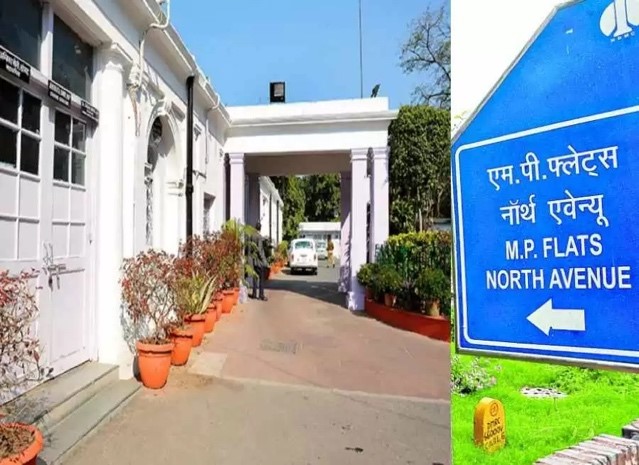
Source:
- Explained: How are Union ministers allotted bungalows, or made to vacate them?
- How are bungalows allotted to Union ministers? What is the policy to vacate them?
Image source:
Tracking of Space Debris - Edukemy Current Affairs
- Context: ISRO is building up its orbital debris tracking capability with space junk posing increasing threat to Indian assets in space.
- Space junk or debris are those generated by the dysfunctional space objects such as pent rocket stages, dead satellites, fragments of space objects which move at an average speed of 27,000 kmph in LEO (Low Earth Orbits).
- They pose a very real threat as collisions involving even centimetre-sized fragments can be lethal to satellites.
- ISRO’s orbital debris tracking capability deploys new radars and optical telescopes under the Network for Space Objects Tracking and Analysis (NETRA) project.
- Under this project, a space debris tracking radar with a range of 1,500 km and an optical telescope will be inducted as part of establishing an effective surveillance and tracking network.
- The radar will be indigenously designed and built and will be capable of detecting and tracking objects 10 cm and above in size.
- Two such radars will be deployed 1,000 km apart for spatial diversity.
- This is the need of the hour as the present Multi Object Tracking Radar at Sriharikota has limited range only.

Source:
Image source:
Wider impact of Pakistan’s internal crisis: Indian Express
Essence: The editorial seeks to throw light on current political crisis in Pakistan and its effects on international relations, including those with India. Pakistan is located at a major crossroad- as a link between west Asia and east Asia and as a gateway to Indian subcontinent. Though the country receives enormous international attention, it has been going through crisis like economic contraction, corruption, issues at Durand line, army-political leadership strife and mending relations with regional leaders- Russia, China, USA, Saudi Arabia, etc.
India, in the past, has received warm sentiments from the elect-PM of Pakistan, with respect to handling the border crisis, but India stands low in Pakistan’s present crisis management. Supreme court ruling and democratic functioning seem to have superseded narrow political gains. But to alleviate the crisis, the oligarchy in Pakistan needs to decide on long term consensus of distribution of resources and benefits to masses.
Even though inclined to the idea but the new leadership is in a difficult position to create renewed relationship with USA and India due to inflammatory remarks against them. The better news is that India isn’t seen in a bad light in the present crisis but the bad news is that India is not at the negotiating table deciding the future of Pakistan’s international engagements.
Why should you read this article?
- To understand Pakistan’s present levels of international engagements.
- To know the crisis between Pakistan’s political and military leadership.
Source:
Return of office work spells misery for women workers: Livemint
Essence: The editorial talks about a LinkedIn survey which has highlighted the impacts of bringing back the work from office culture on women. The report says that as many as 7/10 women have left job or are considering the same due to inflexibility at work. This will impact the diversity ratio, talent pool and unique perspective women bring alongside, in addition to feminization of joblessness.
As many as 80% women prefer office with flexible work timings, reduced working hours, remote work policies, hybrid work and hardly a quarter of them are being offered such benefits. Demanding/accepting such policies has resulted in being overlooked from special projects, being given pay cuts, holding back promotions, or getting an unfavored treatment at office. The least flexible sectors being HR, healthcare, architecture, engineering and building and favorable ones being education, IT, legal and telecom sectors.
Why should you read this article?
- To know the preference of women around working in an office setup.
- To know the impact of demanding flexibility at workplaces.
Source:
Belated pivot: On RBI, inflation, and sustainable growth: The Hindu
Essence: The first Monetary Policy Committee (MPC) meeting of this fiscal year acknowledged that its primary role is to ensure price stability moving away from prioritising growth since February 2019. This pivot is due to the war in Ukraine and the subsequent commodity price rise.
MPC has realised that any further delay in pivoting would risk leaving the economy with neither growth nor price stability as RBI`s quarterly projections for inflation are showing the possibility of three consecutive quarters of inflation above the 6% upper bound.
MPC has also revised its inflation projection for the fiscal year 2023 from 4.5% to 5.7% and reduced its projection for real GDP growth by 60 basis points to 7.2%. The price of crude oil is the key factor that had necessitated this revision as the price of the Indian basket of crude had surged by about 25% over the two months to February 1.
Why should you read this article?
- To know about the pivot Monetary Policy Committee has made and the reasons for the same.
- To know the revised inflation and real GDP growth rate projections and the reason for the same.
Source:
BOLO App
Background:
As per the annual ASER Report of 2018, only about half of the students enrolled in grade 5 in rural India can confidently read a grade 2 level textbook.

About BOLO App
- Google has launched a new app BOLO to help students in India read in Hindi and English and act like a tutor.
- The app came out after a pilot project was carried out by Google over 200 villages in Uttar Pradesh with the help of ASER centres.
- Use of artificial intelligence in the form of an Assistant named Diya would encourage children with the readings and would prompt “Shabash”e., very good in case of correct reading.
- Currently, the app is limited to only Hindi and English, which will be expanded later. The App relies on speech recognition and text-to-speech technology of Google.
- The app operates without any data, is ad-free and even when the phone is offline which makes it user friendly and non-diverting while the lessons are going on.
- One app can be used by multiple students and their progress will be recorded separately, and the difficulty level will be adjusted accordingly.
Quote: Education is an ornament in prosperity and refuge in adversity.- Aristotle
Source:
Image Source:
Share the article
Get Latest Updates on Offers, Event dates, and free Mentorship sessions.

Get in touch with our Expert Academic Counsellors 👋
FAQs
UPSC Daily Current Affairs focuses on learning current events on a daily basis. An aspirant needs to study regular and updated information about current events, news, and relevant topics that are important for UPSC aspirants. It covers national and international affairs, government policies, socio-economic issues, science and technology advancements, and more.
UPSC Daily Current Affairs provides aspirants with a concise and comprehensive overview of the latest happenings and developments across various fields. It helps aspirants stay updated with current affairs and provides them with valuable insights and analysis, which are essential for answering questions in the UPSC examinations. It enhances their knowledge, analytical skills, and ability to connect current affairs with the UPSC syllabus.
UPSC Daily Current Affairs covers a wide range of topics, including politics, economics, science and technology, environment, social issues, governance, international relations, and more. It offers news summaries, in-depth analyses, editorials, opinion pieces, and relevant study materials. It also provides practice questions and quizzes to help aspirants test their understanding of current affairs.
Edukemy's UPSC Daily Current Affairs can be accessed through:
- UPSC Daily Current Affairs can be accessed through Current Affairs tab at the top of the Main Page of Edukemy.
- Edukemy Mobile app: The Daily Current Affairs can also be access through Edukemy Mobile App.
- Social media: Follow Edukemy’s official social media accounts or pages that provide UPSC Daily Current Affairs updates, including Facebook, Twitter, or Telegram channels.


